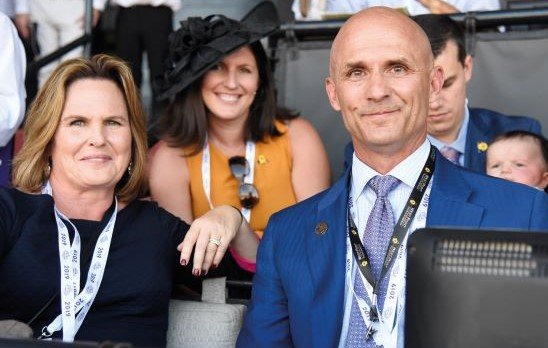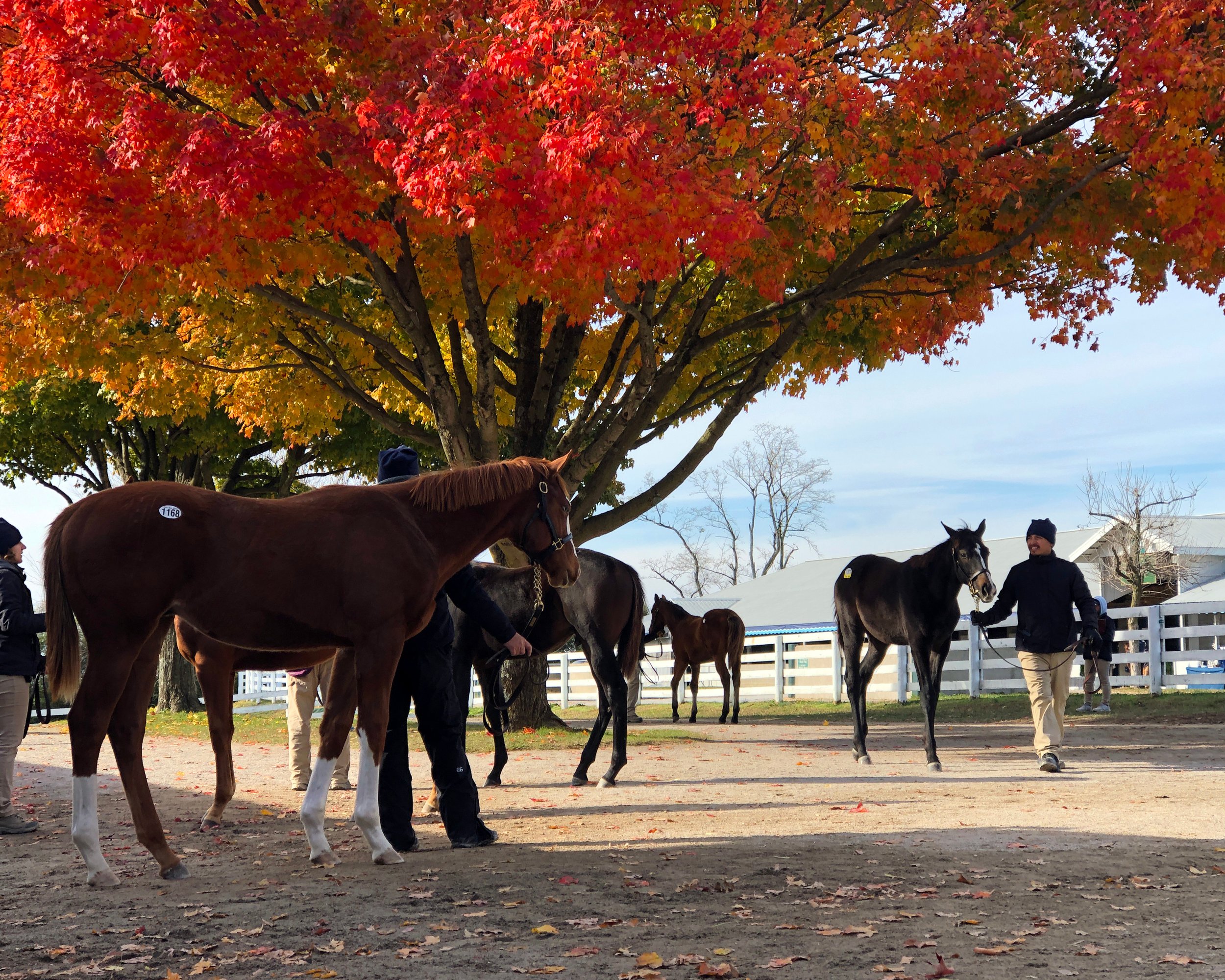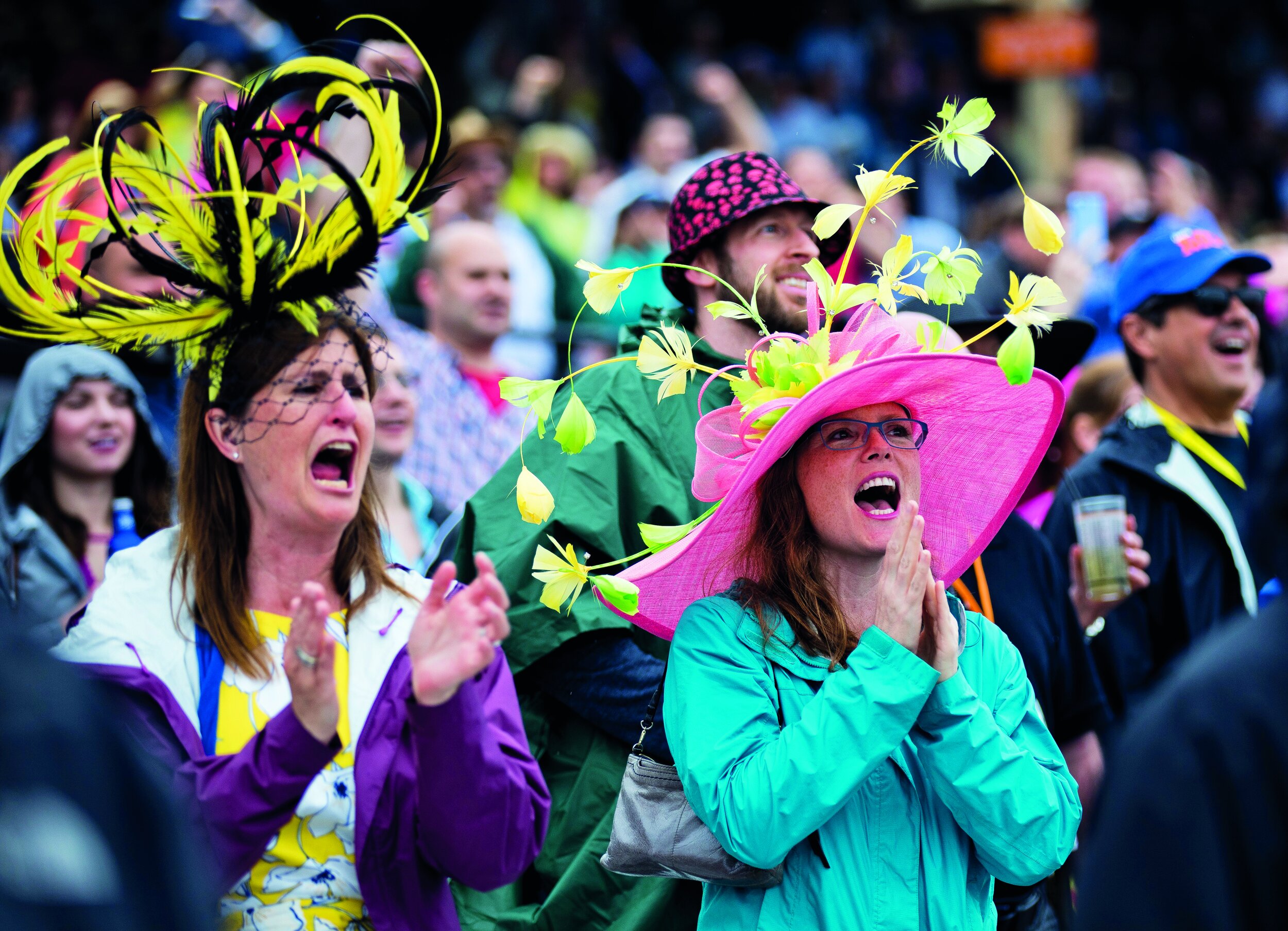#Soundbites - What do you think racing will be like five years from now?
/By Bill Heller
Todd Pletcher, Hall of Fame trainer
It’s difficult to project, but I think we’re going to continue to see what we’ve seen the past five years: a reduction in the tracks that are open. I think we’ll see continued growth in gambling, period. I think racing is benefitting from that—an open mindedness to gambling. Everyone now is gambling on football—pretty much on everything. One thing that grew during the pandemic was gambling. There will be fewer tracks but more of them operating successfully.
One thing we need to do is continue to make improvements on safety.
Assuming it (the HISA) goes through, it’s a good thing for the sport. We need some uniformity. It’s very difficult as a trainer to keep track of all the different rules in every jurisdiction. It should level the playing field.
Graham Motion, trainer
I hope, once we have the Horse Racing Integrity (and safety) Act in place, we’ll be in a better place five years from now. There will be smaller foal crops and less racetracks but a better product—one with more integrity. The status quo is unacceptable. It’s almost impossible to keep up with the different rules. We need uniformity and integrity, and right now we have neither.
Kelly Breen, trainer
I think what we saw in the pandemic was that people are betting—maybe more online. So many people learned how to bet on their phones and iPads during the pandemic that we’re setting record handles.
On track, you go to Saratoga, and it was mobbed. On the blue ribbon days, everybody is going to show up. I’m at the Keeneland Sales, and you can’t raise your hand. Racing is good. If you can get a good legislative body, and get everybody together for where we need to be in the next five years so you don’t have different rules on medication, the good horseman will be around.
Cliff Sise, Jr., trainer
Will we be here in five years? They are just tearing it apart. In New York, they have great purses now, but the new governor wants to take all that money and spend it otherwise. If that happens, purses will go so low. In California, Del Mar does well, but we don’t have the contract to get the purses up to where they should be. Owners are getting disgusted. We’re all shaking our heads wondering if we’ll be here in five years. It depends a lot on governors. If they look down on us, they can just say no more horse racing. PETA is watching us. We’re under the microscope so much. It’s a tough game to enjoy anymore.
Eric Jackson, Oaklawn Park Senior Vice President
Five years is a pretty short time from now. There will be fewer tracks than today, but those that survive the withering will be better than before. Sports are popular. I think it will be quality over quantity. In any sport, there’s demand to see it at a better level.
Chris Merz, Director of Racing, Santa Anita
I’m going to shed a positive light. I’m hoping this new bill puts everybody on the same page with the same rules. Then we can coordinate post times so they don’t conflict. It will be an industry working together to help the industry. We need to make this work. I think we’ve seen what happens when we don’t.
Michael Dubb, owner
There will be more consolidation, and we’ll be probably at the infancy of a marriage to legalized sports betting providers. I think that’s the future of racing. Anything that grows handle is probably good. You get a sports provider and a content provider, and the future will be TVG horse shows—you get on somebody’s platform. Do I want to bet if it’s sunny or cloudy? Do I want to bet football? Here’s horse racing. Do I want to bet that? think that’s the future of racing. Twenty years ago, we didn’t know the future of racing would be iPads. That’s how it turned out.
Barry Schwartz, owner and former CEO of the New York Racing Association
A lot has changed because of the pandemic. I think it exposed people to gambling on the Internet. Handle is everything. To me, right now, racing looks very alive and well. You see what’s going on at Keeneland. They’re already way past last year. Critical to racing is HISTA. They’ve got to get that up and running so the public has more confidence in racing, and that racing is legitimate. I think if we have a real strong organization in place, it will make people a lot more confident about racing—about racing being legitimate. The bottom line is I see a lot of things to be happy about with racing going forward. I didn’t feel that way five years ago.
Nick Cosato, owner
I would like to think we’re headed in the right direction with the Integrity Act. I’m optimistic.
Jack Knowlton, owner
I’m optimistic that racing will be in a better place in five years than it is today. In part, I do believe that the federal legislation will allow more resources to do the kind of testing we need to stay one step ahead of the cheaters. One of the big things is we never had enough resources to do the research. They’re coming up with new stuff to cheat. In my mind, that’s the biggest issue racing is facing. I think you’re going to have owners feeling better about participating.
And we’ll have one set of rules. The other thing, and we’ve made strides, is the issue of safety. We look at the data, and we’re getting a lot better, but there’s more work to be done. We have to continue to improve it. That’s definitely going in the right direction. The other issue is after-care, making sure we find a place for these athletes when they’re done with their careers.



















































![Mike TrombettaBy Bill Heller For the first 15 years of his 31-year training career, 55-year-old Mike Trombetta split every day between the racetrack and his brother Dino’s demolition company in White Marsh, Maryland. “He would train horses in the morning and knock down buildings in the afternoon,” his long-time friend and client R. Larry Johnson laughed. Dino added, “Then he’d go back to the track in the evenings just to check on things.” Of course he did. That’s what he, Dino and their sister Laura learned from their parents. “Our dad worked extremely hard,” Dino said. “Both him and my mom were hard workers. That’s how we grew up. We worked hard in everything we did. That’s what it took to have success.” Mike could still be working two jobs had he not had the good fortune to take over the training of a horse who had previously made just one start, finishing 12th by 24 lengths as a two-year-old in 2005. That horse, Sweetnorthernsaint, would go off the favorite in the 2006 Kentucky Derby, making a strong middle move under Ken Desormeaux before tiring to finish seventh. Sweetnorthernsaint then finished second in the Preakness Stakes. “That gave us national exposure,” Trombetta said. “That gave us a big push for sure.” The following year, Trombetta’s starts increased from 312 to 422, his victories from 78 to 106 and his earnings from $2.7 million to $3.5 million. Trombetta abandoned his demolition career and began upward trending with his training. In 2019, he posted a career high in earnings—$4,614,509—helped by his three-year-old Win Win Win, who was ninth in the Kentucky Derby, and his two-year-old Independence Hall, who became a legitimate contender for the 2020 Kentucky Derby. Independence Hall ran into problems in 2020, but Trombetta still finished 24th in earnings with more than $4.1 million and a win percentage of 16.0. Trombetta has posted a win percentage of 20 or higher for an entire year 11 times. But the past several months have been a bit rough. Through early June, he ranked 36th in the country in earnings with nearly $1.6 million. Yet he still is winning at a 16.4 percent rate. “We’re not doing that well,” he said on June 14. “This year, it’s been an adjustment year coming off the COVID. We were hoping at the beginning of this year things would go back to normal. Then Woodbine got delayed. It got a little weird here. We had a herpes situation in Maryland. For several months, they wouldn’t let horses come in or leave. That was a bizarre situation. Then, at Laurel, they had to redo the track. We’re still not back to normal. It seems like something has been going on—something new to deal with. It’s hard for all of us.” He feels the same way on the thorny issues of medication and whips. “I’m probably like a lot of other trainers,” he said. “What we’d like to have more than anything is a clear understanding of the dos and don’ts, especially in the Mid-Atlantic states. We just want to know what the rules are and how to play the game. When you turn on a football game, they all have fields of 100 yards and 15 minutes in a quarter. Horse racing is anything but that. It’s different in every state.” That is about to change next summer when the Horse Racing Integrity Act comes to life. Will uniform rules become the norm? “We can hope,” Trombetta said. “Time will tell. It would be great just to get everybody knowing what the game looks like. Now, in every jurisdiction, there’s something different. We want to stay out of harm’s way. This Lasix thing is a great example. Two-year-olds can use it in one state, but not in another. I just hope the powers [that] be get something that works for the whole industry so that we can follow and understand. It’s the same thing with this whip rule. It’s different in other states. One state allows four times, one state says six; and in one state, they can’t use them at all. We’re getting further away from uniformity. Guys like us that are in this region race throughout the country for the most part. When you go through the stable gate somewhere else, it’s a different rule.” Can the Horse Racing Integrity Act end that problem permanently? “In a perfect world, yes,” Trombetta said. “I don’t know if they’re capable of doing it.” This summer, Trombetta’s horses—now between 80 to 90—are stabled at Far Hill, Timonium temporarily until Laurel’s renovations are complete and in Delaware. His horses also race in Florida in the winter and in New York in the summer when they belong. His winter stable usually numbers 60 to 70 horses. “We try to take the right horses to the right place,” Trombetta said. “We work off the condition books. There are little differences in each track. Obviously, when you go to New York, you have to know your horse is capable of competing in New York. We don’t get it right all the time, but we try. Surfaces come into play: dirt, synthetic, turf. You have to figure in all of the factors. I carry six, seven condition books with me.” Is it like being back in school? “It can be at times, because it’s constantly changing,” Trombetta said. “I’m checking those things at 6 or 7 at night to make sure I can stay on top of it—make sure I’m not missing anything.” His ongoing success suggests he usually doesn’t miss many things. He’s proficient at preparing his young horses and knowing when to back off. “I try to give them the benefit of the doubt,” he said. “We identify the ones that need their first race. I try to get them prepared for the first race so they don’t get exhausted. I want to see them prepared.” He also wants to give his horses time when they need it. “We try to, as long as owners are patient enough,” Trombetta said. “Our numbers off the layoff have been pretty good over the years. There’s no quick way to do it. It takes time. Some individuals require more time than others.” Experience has helped him shape his program. “You learn it over time,” he said. “It’s still frustrating to this day. Sometimes you ask for one more race of a horse, and it’s one race too many. Six to eight weeks off give these guys a good break. We race year-round somewhere, so you have to know when it’s not too late to take them out of service for a while. By giving them time, we seem to have one ready to take his place.” His owners have provided considerable help. “A lot of the folks I work for, Live Oak, Country Life and Larry Johnson, they all have complete facilities with training tracks, all three of those. Breeding, resting and training, they have complete facilities to get all the work that’s needed. That’s a luxury for me—to be associated with these people that have those facilities.” Trombetta’s stable includes horses he co-owns with his brother and dad, as he races up and down the East Coast. He, his wife, Marie, and their two of three children still in school live on their small farm in Baldwin, Maryland. “Maria and I met in high school, and we’ve been together ever since,” Trombetta said. Their oldest child, 27-year-old Nicole, is out on her own. Their two sons, 16-year-old Michael and 14-year-old Dominic, are experiencing racing in a way their parents couldn’t have imagined when they were growing up—on the internet. “Michael follows it very easily,” Trombetta said. “Sometimes he finds out stuff before I do. They have the whole world at their fingertips.” Trombetta’s introduction to racing was more hands-on. “My dad, Rudy, worked construction his whole life,” Trombetta said. “He had a small construction business on his own. He was always a fan of the horses. He had a friend, and they got a few horses together.” Trombetta began working at nearby Timonium as a teenager. “It was 20 minutes from our house in Perry Mall,” he said. “I was 14...15 years old. It seemed to be a comfortable place for me. I loved the horses, and I loved racing.” He began training in 1986 before his 20th birthday. His first winner came at Atlantic City with Amant De Cour. Trombetta struggled early, Four years into his career, he won just 10 races in 1989. “Obviously, it wasn’t enough to derive an income, so I had to do other things on the way,” he said. “It takes a long churn to build a stable. I did everything I could. When you’re young, it’s pretty challenging.” Which is why he worked two careers—one at the track and one with his brother’s company, “My brother worked with me a long time, up until he got Sweetnorthernsaint,” Dino said. “He would go to the track in the morning, then work with us all day long, 8 to 10 hours with me, and go back to the track in the evening.” When Sweetnorthernsaint redirected Trombetta’s training career, he pondered giving up his life in demolition. “I told him to take some time,” Dino said. “Enjoy this opportunity. I told him to do it and then decide. He just stayed with the horses. I was tickled to death for him because I knew that was his true passion. I lost a good employee, but I was very happy for him.” Sweetnorthernsaint was sent to Trombetta by his former trainer, Leo Azpurua Sr., in Florida after his nightmare of a debut in his first start as a two-year-old in a maiden turf race at Colonial Downs, August 1, finishing 12th in a field of 14. “He was sent to me, and I was told point blank: `He’s very difficult to handle, but he’s a good horse.’” Trombetta said. “He told me he had to be gelded. He said forget that first race. I remember the conversation. He said, “`Trust me—he’s a good horse.’” Sweetnorthernsaint lived up to his reputation when he arrived at Trombetta’s barn. “He was very difficult to handle,” Trombetta said. “He had a mean streak. He would kick you. He was more worried about being ornery than doing what he was supposed to do.” Sweetnorthernsaint calmed down a bit after he was gelded and won his debut in a maiden $40,000 dirt claimer at Laurel, only to be disqualified and placed fourth. “He bumped another horse leaving the gate,” Trombetta said. “If it happened today, I don’t think they would have taken him down. They did me a favor. We went to New York in his second start, and he broke his maiden for twice the purse.” Sweetnorthernsaint won that maiden race at Aqueduct by 7 ¾ lengths on and followed that with a 10-length victory in the Miracle Wood Stakes a month later, giving Trombetta his first Kentucky Derby contender. Sweetnorthernsaint then finished third by three-quarters of a length in the Gr3 Gotham Stakes, March 18. Still needing more graded stakes entries to get into the Derby—before the current point system was in place—he sent Sweetnorthernsaint to the Gr2 Illinois Derby. He won by 9 ¼ lengths as the 6-5 favorite on April 8. One month later, he went off as the 5-1 favorite in the 2006 Kentucky Derby, captured by the unbeaten Barbaro. Sweetnorthernsaint normally raced on or near the lead, but he got away 12th in the 20-horse Derby. “He didn’t get away good, and he had to fight to move up,” Trombetta said. “He used a lot of energy to get back into the race.” He had indeed, rallying to get into third at one point, before fading to seventh. He bounced back to finish second by 5 ¼ lengths to Bernardini in the Preakness and went on to earn just under $850,000 in his career. “Sweetnorthernsaint was a disaster at two, and he was a good horse at three,” Trombetta said. “He just needed some time.” Trombetta is great at that, and he enjoyed the challenge. “My enjoyment is watching a young horse mold himself to be good for everybody,” he said. “Sometimes it works out, sometimes it doesn’t. They’re all individuals. If you treat every horse individually, they’ll be better off. Some take longer than others. I’ve been fortunate. I get to work for some really good owners. It takes a lot of time to get where you want to be. They want what’s best for the horses. I’m blessed.” Actually, Johnson, who has an accounting firm in the Washington, D.C., area and Legacy Farm in Bluemont, Va., feels blessed to have his horses—many of them home-breds—trained by Trombetta. “He’s a remarkable worker, a terrific horseman, completely honest and candid,” Johnson said. “He does a marvelous job of developing young horses. Consistently. He’s been able to get and maintain terrific help. There’s no slippage; nothing gets lost between the cracks because of the people he has.” Johnson, who’s been with Trombetta for 21 years, met him by selling him a filly for $900 in a 1989 sale at Timonium. “Wiith crooked legs,” Johnson said. They didn’t seem to matter. That filly, Overdue Ghost, posted eight victories and two seconds in 12 starts, earning $96,510.Johnson was duly impressed with the 23-year-old trainer. “He was just a kid, but he knew what he was doing,” Johnson said. “Training horses is 24/7. It’s tough to do that job and construction, which is also 24/7.”After she was done racing, Overdue Ghost’s foal, Ghostly Numbers, won 10 of 34 starts and made more than $280,000. Another Johnson horse, Partners Due, won six of 21 starts and earned $239,345. “Then we sold her at Keeneland for $320,000,” Johnson said. A pair of 2004 foals, Street Magician and Strike the Moon, were two more success stories. Street Magician won five of 10 starts and made $254,440. Strike the Moon posted five wins, nine seconds and five thirds in 24 starts, earning $680,170. In 2019, Live Oak Plantation’s home-bred three-year-old Win Win Win captured the Pasco Stakes at Tampa Bay Downs by 7 ¼ lengths, finished second in the Blue Grass Stakes, third in the Tampa Bay Derby, ninth in the Kentucky Derby and seventh in the Preakness Stakes. He then won his turf debut in the Manila Stakes at Belmont Park in July—his final start in his three-year-old season. Trombetta had hoped Independence Hall would take him back to the Kentucky Derby in 2020 after he finished fifth by one length in the Gr1 Florida Derby.Instead, he was sidelined with injuries and then his owners, Eclipse Thoroughbred Partners, Twin Creek Racing and Kathleen and Robert Verratti, decided to switch trainers, hiring Mike McCarthy. Independence Hall returned to win an allowance race/optional $100,000 claimer last November 9. In four subsequent starts in graded stakes, he’s finished fifth, third, fourth and third.Losing talented horses is part of horse racing. Trombetta moved on. His top horses this year include Larry Johnson’s five-year-old mare Never Enough Time, who’s earned more than $275,000 off five victories in 13 starts, and Three Diamond Farm’s four-year-old filly Kiss the Girl, whose four victories in 13 starts have led to more than $220,000 in earnings. Forever uncomfortable talking about himself, Trombetta said his success has happened “because we had very good horses. We had the right horses. Things fell into place.” They have for quite a long time in his care. “Mike takes it real serious,” his brother said. “He puts his heart and soul into it. But he’s very low-key talking about himself. He’s pure class.” Asked if he was surprised by Trombetta’s continuing success, Johnson said, “Not at all. It was inevitable. Graham Motion is a good friend of mine. I put him in the same category.” ](https://images.squarespace-cdn.com/content/v1/517636f8e4b0cb4f8c8697ba/1627049051412-KRCRWBOM2I1M1Y1AYZMV/z210628_eclipsesportswire__00727.jpg)













